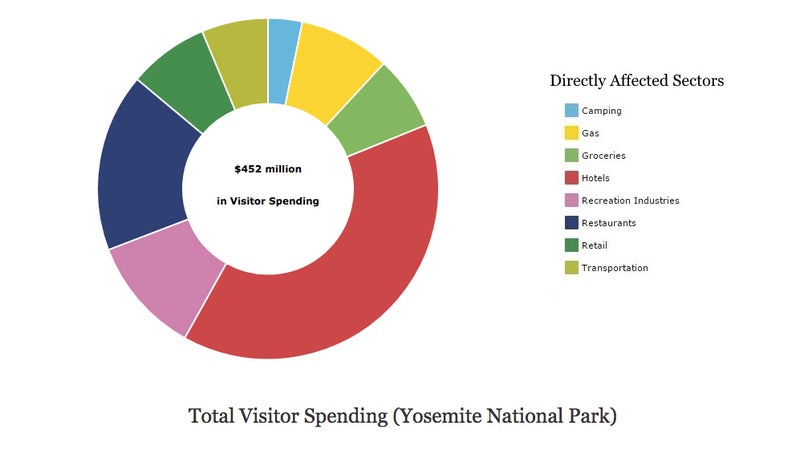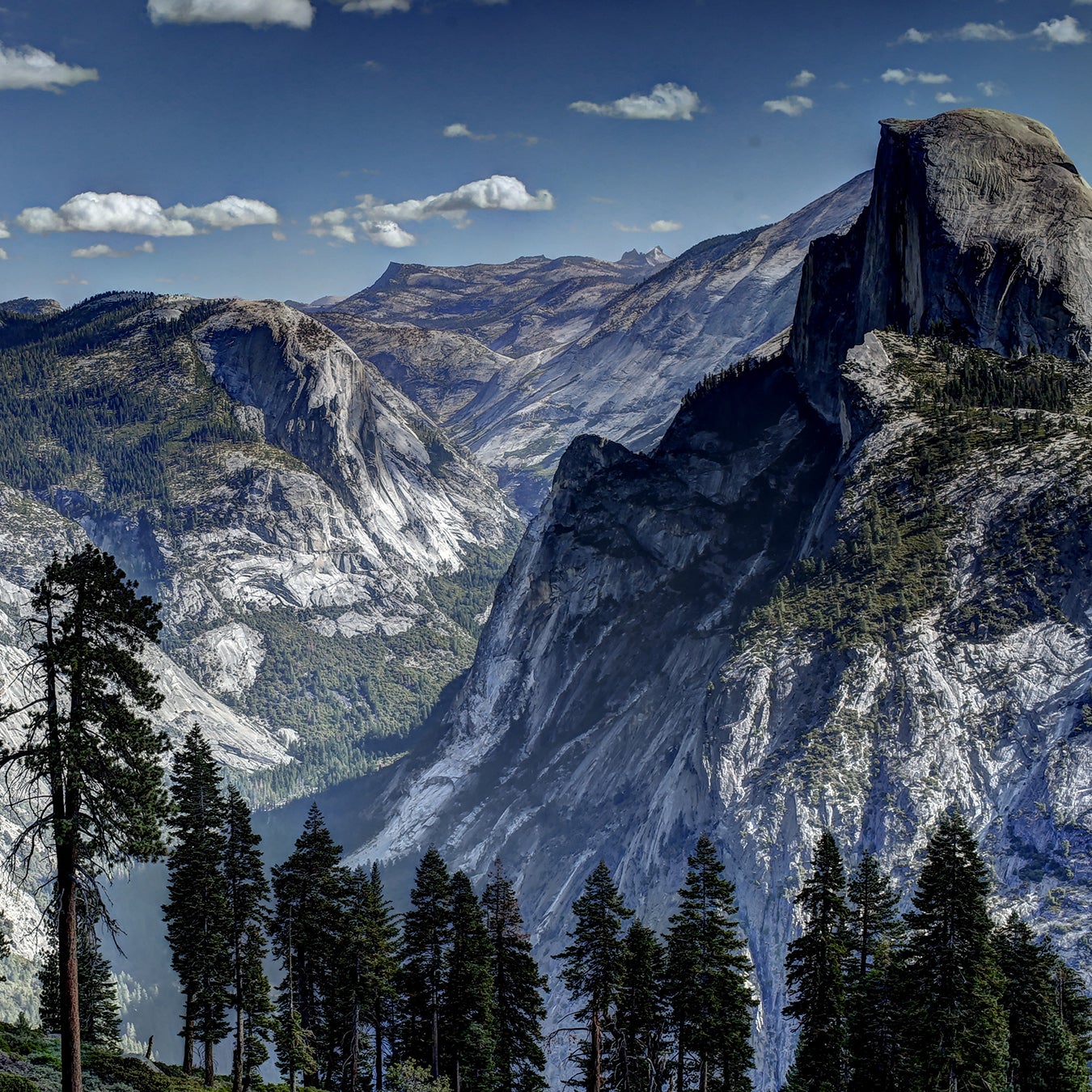So far, the╠ř has burned 96,810 acres in CaliforniaÔÇÖs Sierra Nevada mountains since it ignited 35╠řdays ago. ItÔÇÖs cost two lives and╠řinjured 19 people. The actual price of╠řfighting it will be measured in the tens of millions of dollars. All that doesnÔÇÖt even put it on the top 10 list of , but it is still going to be a fire that people talk about for years. Why? It closed most of Yosemite National Park for three weeks.╠ř
Yosemite is ╠řand, as such, it's a major economic engine in the region. July and August are the parkÔÇÖs most popular months: last year, they accounted for 32 percent of the park's annual visitationÔÇö1,193,339 people.╠řThe park itself is╠řmassively backlogged with deferred maintenance costs and relies on entry fees to help fund critical projects.╠řCurrently, Yosemite has a of deferred maintenance. Even though it didnÔÇÖt burn much of╠řthe park, the Ferguson fire will add millions to that backlog by reducing revenue this year. On top of all that, many local businesses depend╠řon the income park visitors generate╠řduring the summer to keep lights on╠řthe rest of the year. ╠ř╠ř
I called Lynne Koontz, who works as an economist for the National Park Service and is the co-author of╠ř that assessed the total economic impact of parks on their surrounding communities. She explained that calculating the financial and economic impact of the Ferguson Fire is going to be difficult, and that the Park Service doesn't yet have╠řdata on how many visitors it lost during the closure. While the Yosemite Valley╠řitselfÔÇöby far the park's biggest drawÔÇöwas closed, some visitors were able to reach the park's more remote areas in other ways, further complicating the data. “But you can look at visitation data, and extrapolate some broad strokes,” she explained. So I did just that.╠ř
Last year, , bringing a total of $589 million to the local economy, according to Park Service estimates.╠řThis year, most of the park was╠řclosed for 20 days, reopening Tuesday. If we remove 20 of July and AugustÔÇÖs 62 days, we can╠řassume the park lost 384,948 visitorsÔÇöor nearly nine percent of its annual total. The actual impact on visitation numbers will likely be greater, as the length of closure was announced as ÔÇťindefinite,ÔÇŁ likely causing tourists╠řtraveling from far away to cancel future trips. Plus, smoke from the fire╠řchoked╠řpark visitors for days before the park closed, which also likely impacted visitation. “I would think visitation number would be down for a good period before and after the closure,” Koontz told me.╠ř
The latest data on total entry fee revenue available comes from 2014, when Yosemite made from its visitors. ╠řand pays for maintenance to roads, campgrounds, trails, and other infrastructure. If we continue╠řwith the estimate of a nine percent decrease in visitors, we can assume the park lost at least $1,691,100 in entry fees alone.╠ř╠ř
In 2014, the Park Service made from franchise fees paid by concessions operators in Yosemite. We can also assume the Ferguson Fire will knock at least nine percent off of 2018ÔÇÖs totalÔÇö$987,660ÔÇöwhich will impact╠řthe budget of the entire Park Service. That includes╠řits ability to address its╠ř$11.9-billion maintenance backlog. If youÔÇÖre driving through Smokey Mountain National Park next year, and get a flat tire after hitting a pothole, you might consider blaming the far away Ferguson Fire for that.╠ř
But Yosemite and the Park Service will carry on. We may not be able to say the same about local businesses that depend on park-driven tourism to survive.╠ř

In 2017, the Park Service calculated that visitors to Yosemite spent . That supported 6,670 jobs, creating $205 million in labor income. Knocking nine percent or more off any of those numbers is going to hurtÔÇöby at least $40,680,000. Labor income in local communities could drop by $18,450,000.
Already, stories of hardship are filling media outlets nationwide.╠řÔÇťIf I hadn't had savings, which is depleted, I'd be scrambling for money or I wouldn't have a business,ÔÇŁ local hotel owner George Shaw told . He says the park closure cost him $200,000 in lost revenue, forcing him to fire eight of his 43 employees.╠ř
“Money that was in our bank we now have to turn around and refund people on an experience we were not able to offer,ÔÇŁ Scott Gehrman, who runs a local tour company, told . The closures came during his companyÔÇÖs busiest time of the year. The magazine estimates that local businesses could suffer a far greater impact than just the number of visitors lost to the three week closure. Because more visitors come to the park from far away during the summer, they fill hotels outside the park disproportionately during that season. Lost revenue estimates for that industry may be as much as 20 percent of their annual total.╠ř
Add all those numbers up, and the financial impact is simply massive. The park itself will lose at least $2,678,760,╠ř while the local community will lose businesses and jobs.╠řThe AP reports that the total economic impact on local businesses could be .╠řAnd that's before we event talk about the cost of fighting the fire itself.╠ř
With this week's re-opening of the park, local businesses have launched a social media campaign designed to inform potential visitors that the park is good to go. is full of photos of smoke-free skies, and the parkÔÇÖs epic vistas. ÔÇťThank you to all the men and women that helped protect our piece of heaven in the Sierras,ÔÇŁ .╠ř


